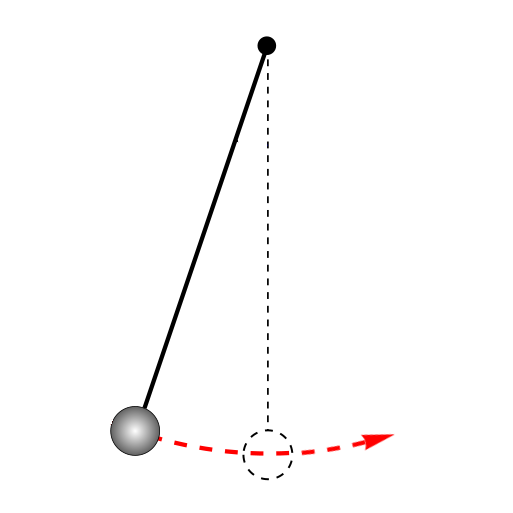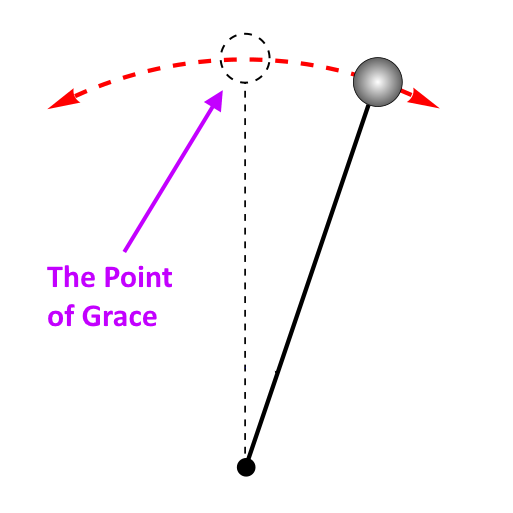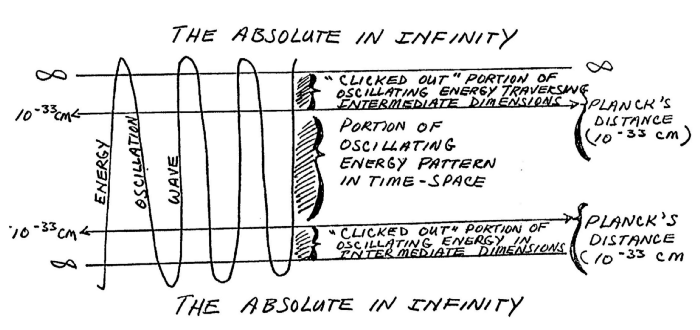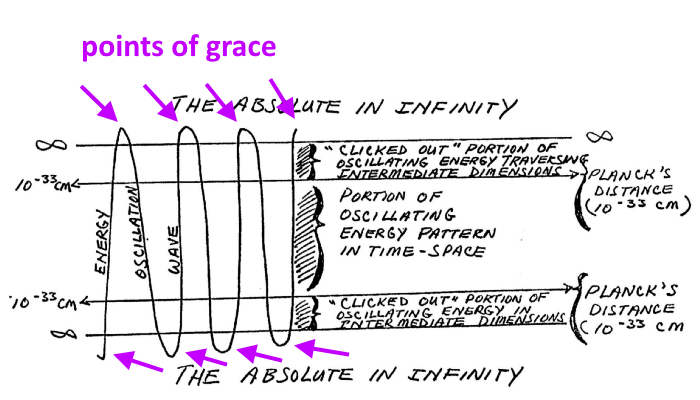 I subscribe to a number of techy innovation-rich groups via social media, and every now and then a real gem of the genre comes scrolling past on my newsfeed. A few days ago, social media linked me to a curious article recently posted on Vice Motherboard. I have no interest in astral travel, but the odd twist about the CIA in the headline intrigued me (see illustration). A quick glance at the article revealed something quite unusual had been discovered, so I dived into the matter out of curiousity. It turns out, very little is about astral travel, and much more is about some topics I follow closely. I surely didn't expect I was about to discover something I'd been searching for for many years -- a link between the world of sub-quantum physics and a poem.
I subscribe to a number of techy innovation-rich groups via social media, and every now and then a real gem of the genre comes scrolling past on my newsfeed. A few days ago, social media linked me to a curious article recently posted on Vice Motherboard. I have no interest in astral travel, but the odd twist about the CIA in the headline intrigued me (see illustration). A quick glance at the article revealed something quite unusual had been discovered, so I dived into the matter out of curiousity. It turns out, very little is about astral travel, and much more is about some topics I follow closely. I surely didn't expect I was about to discover something I'd been searching for for many years -- a link between the world of sub-quantum physics and a poem.
It's a poem written by my older brother a few years before he died. It's a gem also. Although brief, the poem says a lot, as it was the culmination of years of a trained engineer thinking about the structure of geometry, space, time, and measurement itself. Before we get to the poem, I want to give it some context by way of an excerpt from this once-classified research paper (which can still be downloaded from the Central Intelligence Agency’s Reading Room.)
One of the aspects that is exciting for me is that the story around this research paper lends a peculiar flavor of credibility to its otherwise-fringe claims, and the Vice article (along with its prequel) tells that story well. Simply finding the research paper itself would have been cool enough, but finding one that is the heart of a conspiracy theory reaching back for decades -- much more interesting indeed. I recommend you bookmark the Vice article and spend a few minutes reading it some time. But for now I want to look at a certain idea mentioned in the research paper, because of how it directly relates to the central idea being expressed in the poem.
The following excerpt from the research paper describes some of the physics behind an idea I used to discuss years ago with my brother Garrett. As an engineer, he used Fourier Transforms daily, specializing in vibration analysis of large machinery in order to predict when it would next need maintenance (relevant for machines where downtime is very expensive). He loved to tinker, and once custom-built a 64-channel recording device. It looked like an electronic octopus that was attached to his computer. He wired it up to a giant engine on a ship, with cabling and sensitive electrodes all over the place, in order to analyze -- in real-time -- how the engine was vibrating, at an extreme level of detail. He was very talented in this field. I mention this so you know he well understood the math and physics referenced in his poem (whereas my own take is that of an amateur with a vivid imagination who, not knowing where the box is, often thinks of things outside-the-box).
 The idea which we discussed in about 1999 arose out of a series of conversations where he was teaching me the physics of how pendulums and springs work. We talked about these dynamics for days, as he loved to talk and I loved to listen. We talked about paradoxes in math and measuring, like how Euclid had defined points as "things which have no part," a fact I would pick up years later in my own studies.
The idea which we discussed in about 1999 arose out of a series of conversations where he was teaching me the physics of how pendulums and springs work. We talked about these dynamics for days, as he loved to talk and I loved to listen. We talked about paradoxes in math and measuring, like how Euclid had defined points as "things which have no part," a fact I would pick up years later in my own studies.
I once asked Garrett what was the technical term to describe the moment where a pendulum was allowed to go all the way around a full 360-degree circle, and was at its utmost peak. That was an interesting thought experiment. He didn't have an answer for the technical term I asked about. As we discussed the idea often from different directions, we eventually came up with our own term to describe that moment. We called it "the point of grace," or the Grace Point, and wondered about its mathematical and physical properties. It seems like nothing is happening but a lot is. In a way similar to chaos theory describes -- but more predictable -- a tiny bit of energy at the grace point will have a significant effect later in the pendulum swing, far more than a similar force would have at any other point of its swing. There are other structures, processes, and ideas which have similarly-sensitive inflection points.
 It was a fun idea, and then time passed and life went on and we rarely mentioned the idea for a decade or more. Then Garrett started telling everyone about this poem he'd written. I heard about the poem from others for a while before I finally heard him recite it. I remember -- we all do -- he was so pleased with the poem which he had shaped and smoothed carefully over a long period of time until it was perfect. I was delighted that he'd found such an elegant way to convey the essence of the point of grace.
It was a fun idea, and then time passed and life went on and we rarely mentioned the idea for a decade or more. Then Garrett started telling everyone about this poem he'd written. I heard about the poem from others for a while before I finally heard him recite it. I remember -- we all do -- he was so pleased with the poem which he had shaped and smoothed carefully over a long period of time until it was perfect. I was delighted that he'd found such an elegant way to convey the essence of the point of grace.
Then my brother died (too young!) of cancer, more years passed, and suddenly this week while I read the research paper, a certain idea jumped off the page at me. What the poem's final line calls "flowing grace" the paper calls "points of rest which join infinity." If you squint you can see they're talking about the same thing. Take a look at this excerpt from the paper (just skip to the illustration if you're not an engineer), then read the poem, and see if you agree:
Excerpt from "Analysis and Assessment of Gateway Process"
Physicists define time as a measurement of energy or force in motion. In other words, it is a measurement of change. However, in order for energy to be in motion it must first be limited in some way within the confines of some sort of vibratory pattern so that its confinement gives it the capacity for being contained at a specific location which is distinguishable from other locations (space). Energy which is not confined is force without limit, without dimension, without the limits of form. It is infinity, cannot move because there is nothing beyond infinity, and is therefore outside of the dimension of time. It is also beyond space because that concept implies that a specific energy form is limited to a specific location, and is absent from other locations. But if energy is in the state of infinity, there are no boundaries, no "here" to differentiate from "there", no sense of area. Energy in infinity means energy uniformly extended without limit. It has no beginning, no end, no location. It is conscious force, the fundamental, primal power of existence without form, a state of infinite being. Energy in infinity is said to be completely at rest and, therefore, cannot generate holograms so long as it remains utterly inactive. It retains its inherent capacity for consciousness in that it can receive and passively perceive holograms generated by energy in motion out in the various dimensions which make up the created universe but it cannot be perceived by consciousness operating in the active universe. Energy in this state of inactive infinity is termed by physicists as energy in its absolute state, or simply "the Absolute." Between the Absolute and the "material" universe in which we experience our physical existence are various intervening dimensions to which human consciousness in altered states of being may gain access. Theoretically, human consciousness may continue to expand the horizons of its perceptual capability until it reaches the dimension of the Absolute at which point perception stops because the Absolute generates no holograms of or about itself.
19. Intervening dimensions
Since the Absolute is conscious energy in infinity (i.e. without boundaries), it occupies every dimension to include the time-space dimension in which we have our physical existence but we cannot perceive it. It overlays everything as do many of the intervening gradients or dimensions through which the energies of the universe pass on their way to and from their home in the state of infinity (the Absolute). To enter these intervening dimensions, human consciousness must focus with such intense coherence that the frequency of the energy pattern which comprises that consciousness (i.e. the brainwave output) can accelerate to the point where the resulting frequency pattern, if displayed on an oscilloscope, would look virtually like a solid line. Achievement of this state of altered consciousness sets the stage for perception of non-time-space dimensions because of the operation of a principle in physics known as Planck’s Distance. This is an aspect of quantum mechanics which applies to the fact that any oscillating frequency (such as a brainwave) reaches two points of complete rest which constitute the boundaries of each individual oscillation (i.e. movement up or down). Without these points of rest, an oscillating wave pattern would be impossible since the points of rest are required to permit the energy to change direction and thus continue vibrating between rigid limits. But it is also true that when, for an infinitesimally brief instant, that energy reaches one of its two points of rest it "clicks out" of time-space and joins infinity (see Exhibit 3).

Exhibit 3: Graphic Display of the "Click Out" Phenomenon, from Bentov, Stalking the Wild Pendulum
That critical step out of time-space occurs when the speed of the oscillation drops below 10-33 centimeters per second (Planck’s Distance). To use the words of Bentov: "...quantum mechanics tell us that when distances go below Planck’s Distance, which is 10-33 CM, we enter, in effect, a new world." To return to our case in point, the human consciousness wave pattern reaches such high frequency that the pattern of "clickouts" comes so close together that there is virtual continuity in it. Then, a portion of that consciousness is actually postulated to establish and maintain its information collection function in those dimensions located between time-space and the Absolute. Thus, as the almost continuous "clickout" pattern establishes itself in continuous phase at speeds below Planck’s Distance but before reaching the state of total rest, human consciousness passes through the looking glass of time-space after the fashion of Alice beginning her journey into wonderland.
Ok, that was the physics. If you're not into quantum physics, you will have missed the importance of Planck's distance, which is known as the smallest measurement possible. It is 10-33 cm long, which makes it so astonishingly, absurdly, small anyone can understand that it really is the limit of physics. Smaller than that is literally impossible to measure because the laws of physics break down. That's where the flowing grace begins.
And now for the poem:
Points that lie in perfect place,
The metric man cannot behold
the space between them flowing grace
all the wonders nature holds.
For hath the ruler in his grip
no index for relationships.
Square and plummet fail to mark,
Matters felt and of the heart.
No level, rod, nor referenced gauge
Convey what only comes with age.
Now we see, that we’ve resigned
our quest to map the grand design.
Points that lie in perfect place,
the space between them flowing grace.
© 2015 Garrett Smith
It takes a minute to digest what he's talking about (for example, "the metric man" is a person who measures things, but it's not obvious at first that we all like to measure things). However, the point he makes is worth contemplating. Hopefully as you do, you can see how the poem is talking about the same thing as the research paper. I modified the illustration from the article so you can see it more clearly:


[Update, for those still reading. It's 2022 and I just stumbled on a journal entry from 2006, written right after a phone conversation with Garrett. It's relevant to this article here, so I'm adding it:
In conversation with Garrett who wanted me to help illustrate some engineering concepts, we spoke of the nature of vibration, springs, weights, inertia, pendulums, and the perfect resting point between the stored energy of a spring and the movement of a mass attached to the spring. Knowing only a little about physics, I understood the concepts best when he spoke in parable. By this means, I learned the finer details of a few principles I had been learning privately, most particularly the understanding of the point of grace. The idea is that to resist an action when it is at its full momentum requires a great effort. Yet to lightly -- ever so lightly -- touch a perfect action such as a pendulum swing at its point of grace, gives it the ability to increase or decrease its momentum when at its greatest. Rather than to risk obliteration by resisting the swing at the bottom, it is wiser to wait until it reaches the edge of its momentum and lightly touch it. By doing this a few times in perfect rhythm, the pendulum can be brought to a graceful halt, even as it can be brought from such a halt into full motion. Tesla used this principle to build a machine which caused earthquakes, by exciting the resonant frequency of the earth's outer shell. 11:04 am, Tuesday, April 25, 2006]